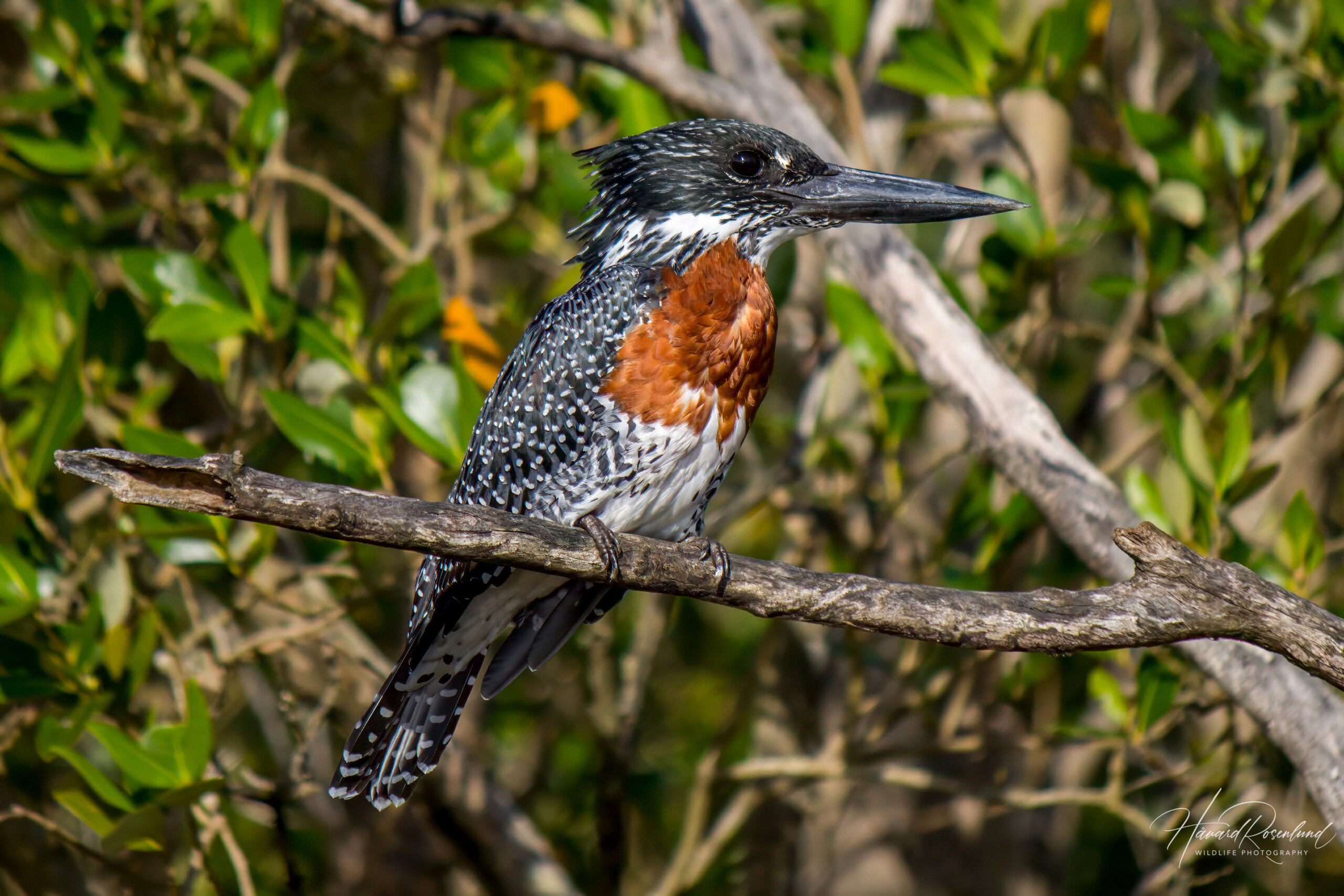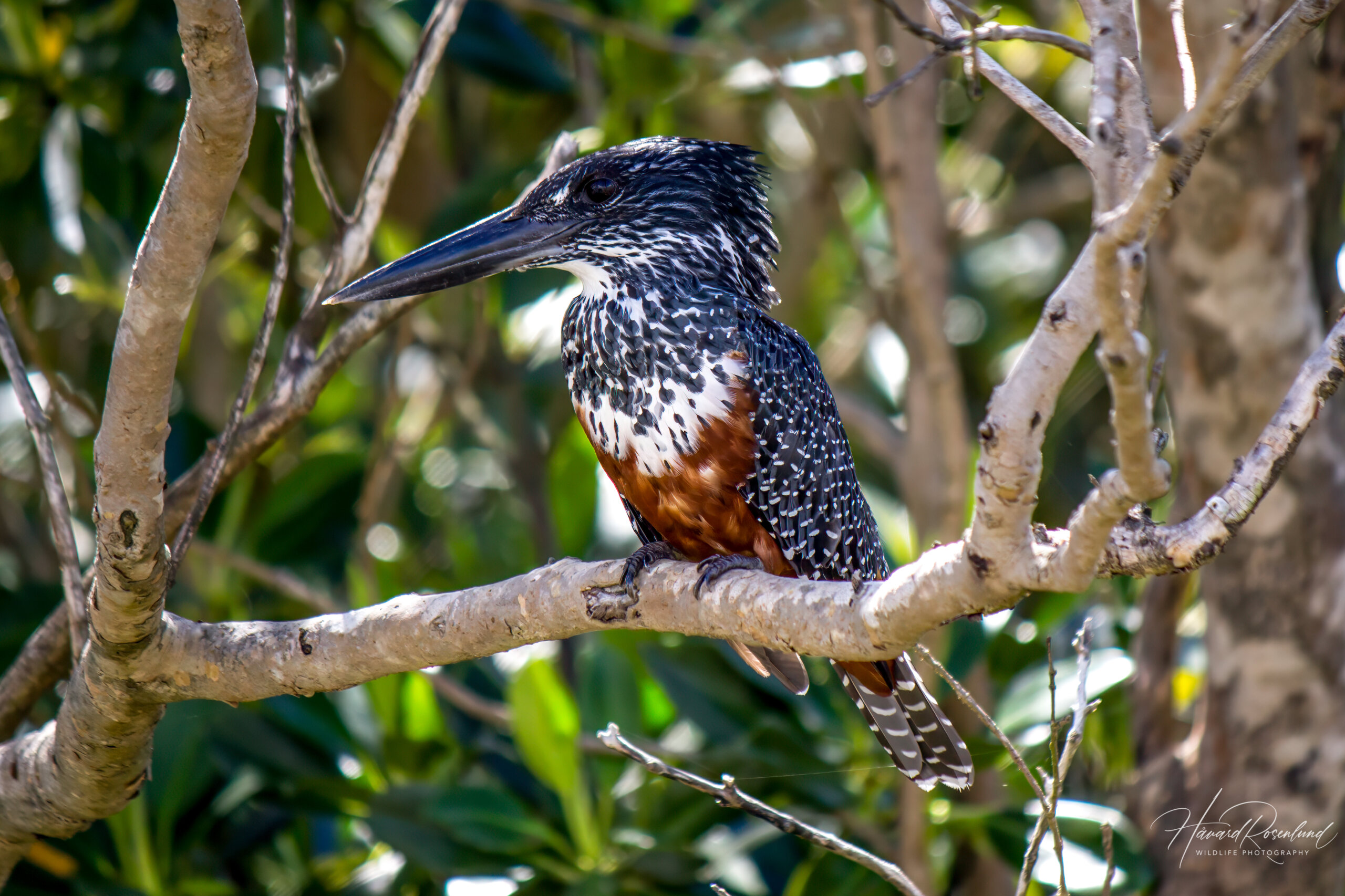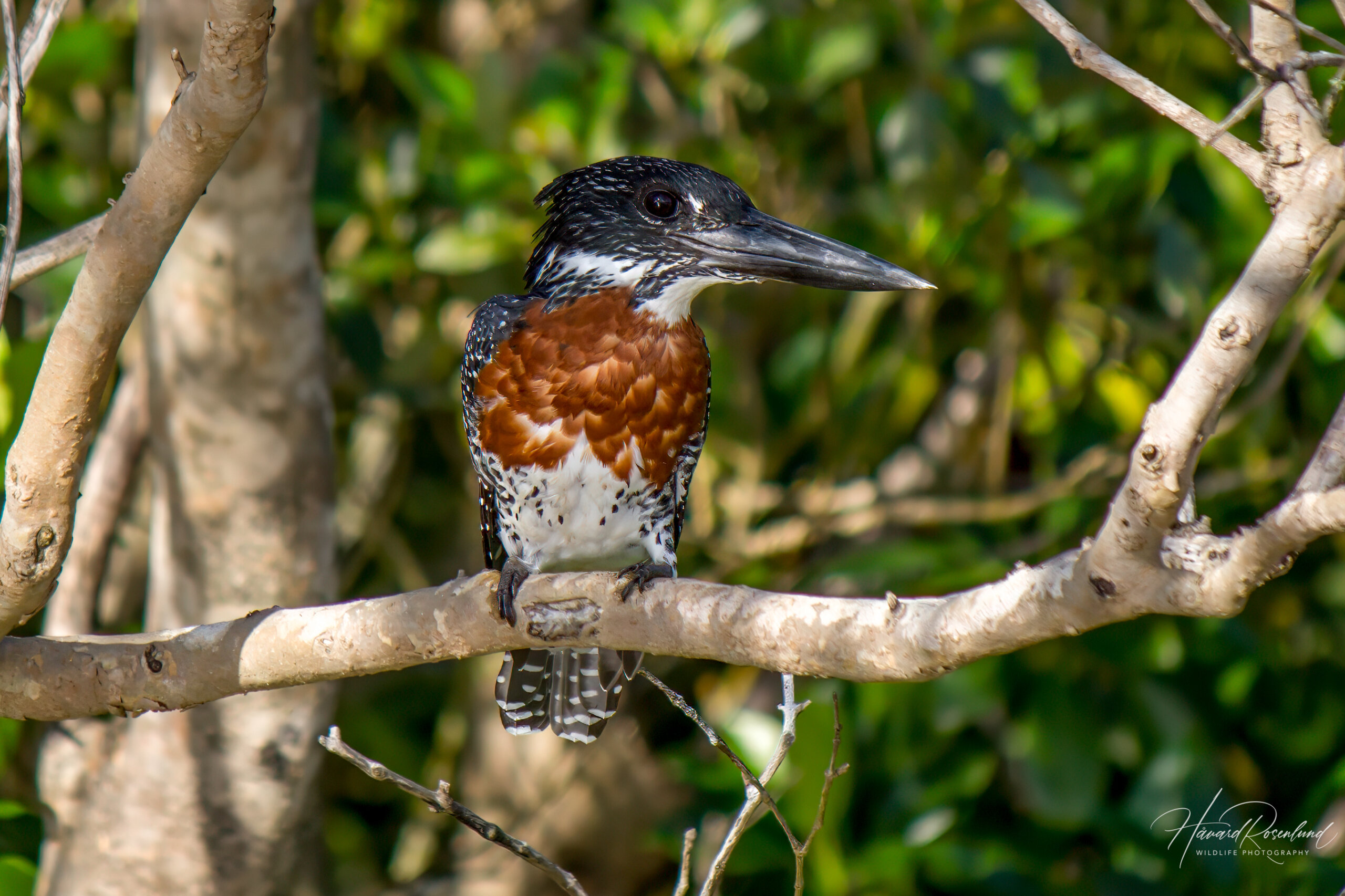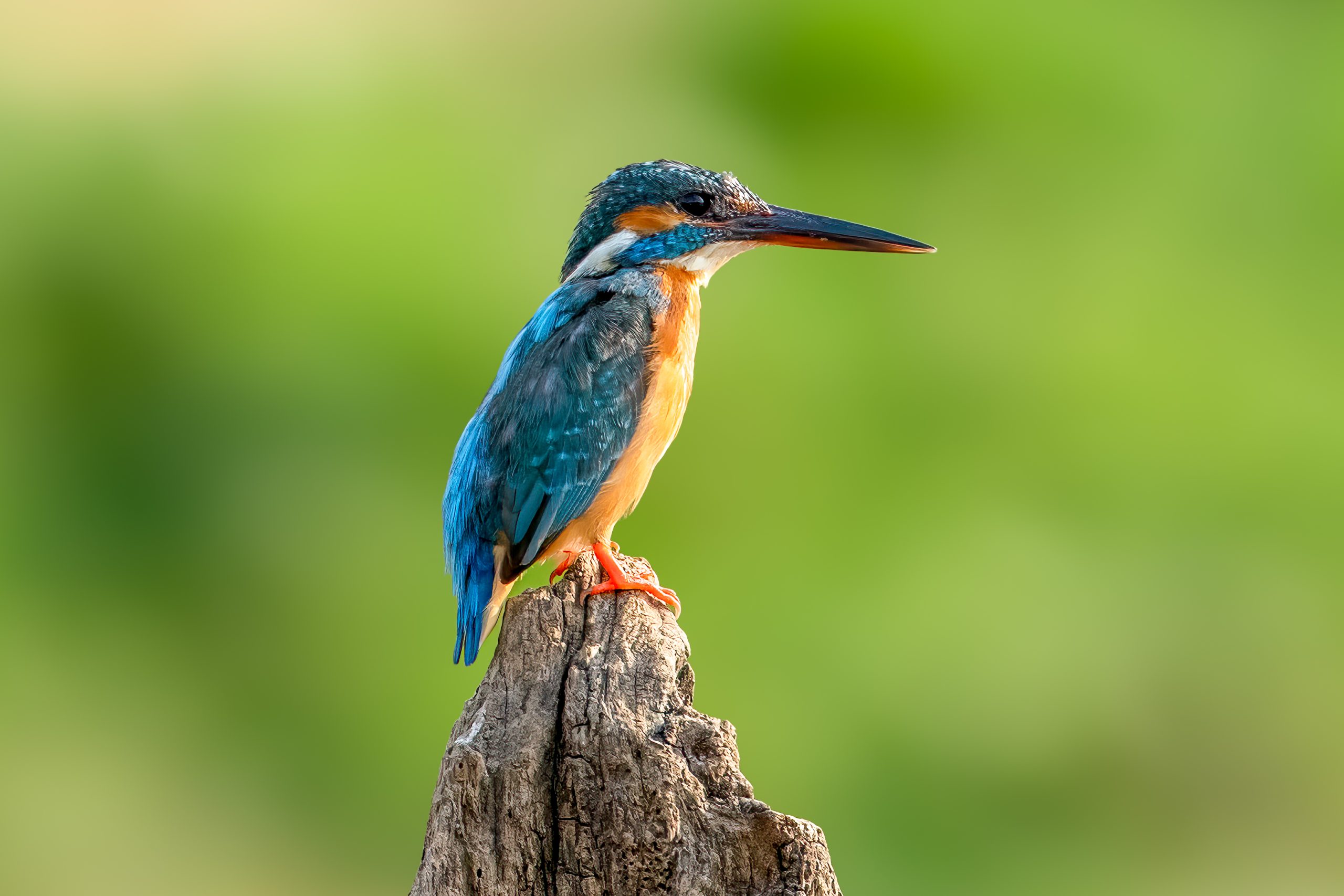Description
The giant kingfisher (Megaceryle maxima) is the largest species of kingfisher in Africa and can reach lengths up to 48 cm (19 in). It has a large straight black beak and a sizeable crest. Most of the body is covered in black feathers with white spots at their tips. Males (photo above) have an orange breast and a white belly with sparse black spots. Females (see gallery) have a black and white spotted breast and an orange belly. A good way to tell the two sexes apart is to think of the male as having an orange shirt and the female an orange skirt.
Habitat
It is always found close to water, and rarely more than 100 meters away from the water’s edge. Almost any water body can be suitable habitat if there is enough food and overhanging branches. Rivers, streams, lakes, dams, estuaries and even seashores can all be suitable habitats, both in open savannahs and in dense forests. There are two subspecies, the nominate M. m. maxima, which is found in more open habitats, and M. m. gigantea, which is found in dense rain forest habitats. The rain forest subspecies is darker, less spotted above and with heavier black barring on the underparts than the nominate maxima seen in these photos.
Diet
The giant kingfisher will predominantly feed on crabs and fish. Amphibians, other crustaceans, small reptiles, and insects are also included in the diet. It often hunts by diving from a perched position into water or by hovering in mid-air before diving. Upon diving for prey, it often gets fully submerged. It will consume small crabs whole but will remove carapace and pincers from larger crabs before eating. Fish are swallowed whole, head first. If diving in saltwater, it will clean its feather in freshwater afterwards, if possible.
Nesting
The giant kingfisher is territorial, monogamous and a solitary breeder. Eggs are laid in the period July-January, with peaks in August-October. A breeding pair will excavate a tunnel and a nesting chamber in a vertical riverbank or a cliff by the water. The tunnel can vary in lengths between 0.9 to 8.45 m (35-332 in), and the chamber will be 20-60 cm (8-23.5 in) wide. Entrance of the tunnel will often be concealed behind overhanging vegetation. Three to five eggs are laid and incubated for 25-27 days by both parents. After hatching chicks will be fed fish several times a day. They stay in the nest for about 37 days and will still be dependent on their parents another 21 days.
Status
The giant kingfisher is a species with a large range in Africa and is common close to water in protected areas. It is often seen as a pest in commercial fish farms and hatcheries. It might be threatened by pesticides that are leaked from farmlands into water, as well as loss of habitat and breeding grounds. Because of its wide distribution and being locally common in many areas it is listed as least concern on the IUCN Red List.










